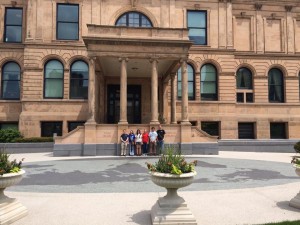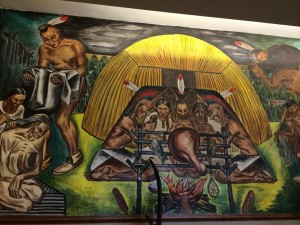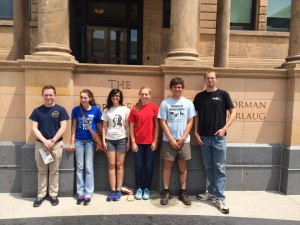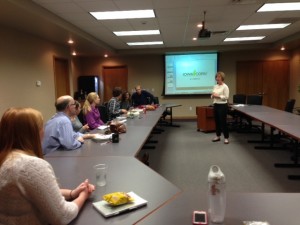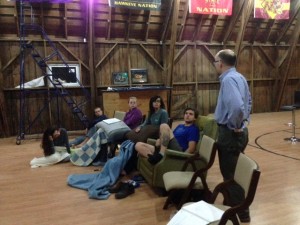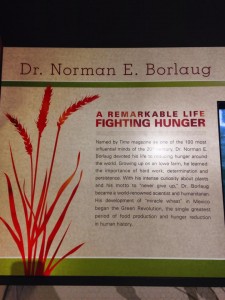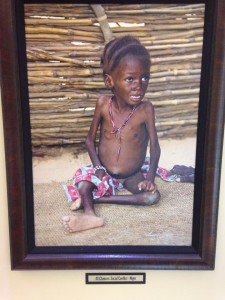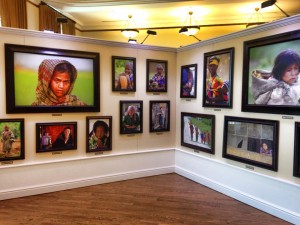Today we read and heard about the Green Revolution which I briefly mentioned in my post yesterday. I was actually a bit mistaken, and the first Green Revolution was in Latin America (wheat) and Asia (rice). Our book by Paarlberg was clearly geared more pro-Green Revolution, but still put forward the arguments that paint the Green Revolution in a rather dim light. Going to the World Food Prize, however, treated Borlaug and the Green Revolution as near heroic acts that saved billions. The revolution certainly produced more food and reduced hunger, but some of the underlying principles had issues and the gain in food was not earned without giving up something.
My first and only real exposure to Borlaug was in sustainability, and it was not a significant explanation. He was a man who developed seed varieties that require inputs of water and nitrogen, but produce significantly more per acre. He also did his best to spread these and food itself to developing countries and won the Nobel peace prize for his work. My exposure was primarily his theory that more yield would occur per acre so the amount of agricultural land in use would decrease and price of food would fall. This idea failed, since the yield increased and price decreased, but the amount of land has continued to increase. Borlaug did do a lot and helped improve the amount of food available worldwide, but by relying on such things as pesticides and high inputs we put ourselves into a delicate situation of changing the system for food and risking other things along the way.
Nitrogen runoff is the one everyone talks about. Nitrogen is sprayed into fields to get the corn to grow well, but sometimes either at a bad time when it can’t be well absorbed or more than the soil/plant can absorb. Although the book doesn’t fully explain the problems associated with, sustainability courses have. 1. The nitrogen will wash away either on the surface or in groundwater until a lake or the ocean, in either case causing massive ocean plant growth for the same reasons it causes corn to grow. This makes an algal bloom.
Algae grows much faster than fish numbers so nothing eats all of it, then the algae dies and uses up some oxygen in the process. With the huge amount of algae dying, it actually makes the water oxygen limited or devoid of oxygen so fish and most species can’t live in it, which is why they are called dead zones (the majority of the Gulf of Mexico being the most notorious one). 2. Some nitrogen doesn’t wash off, but instead evaporates and this is a problem because it’s a GHG 300 times as potent as CO2. Given that (and many other issues involved such as larger farms instead of many small ones) shows that the green revolution had its issues. Combine these with the social issues that were caused in some areas where the Green Revolution occurred (greater inequity and social disparity problems) and no one can say that it was a perfect change. The World Food Prize definitely made it seem so while the book acknowledged there are issues about this method.



